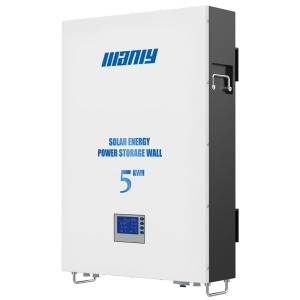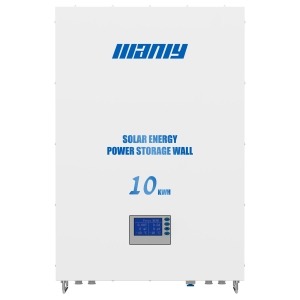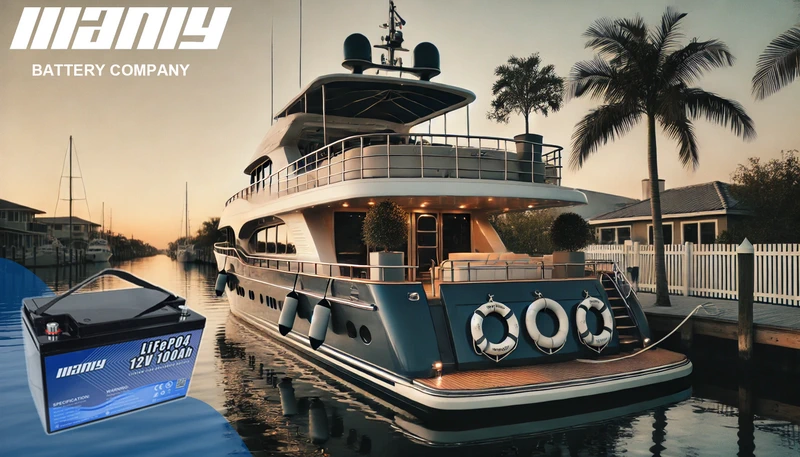What Type of Battery is a Marine Battery? A Detailed Breakdown
Table of Contents
- What Type of Battery is a Marine Battery? A Detailed Breakdown
- Find The Best Solar Batteries For Your Home
Maintaining a consistent and dependable boating experience depends on choosing the right marine battery. Whether you use a trolling motor, start your engine, or run electronics, the appropriate battery type will make all the difference. The several choices for batteries make many sailors find it difficult to choose the right one.
This article will break apart lead-acid, AGM, gel, and LiFePO4 batteries as well as other types of marine batteries. You will learn every type in great depth, including its benefits, drawbacks, and optimal uses. By the conclusion, you will understand the reason LiFePO4 batteries are the best fit for marine applications.
What is a Marine Battery?
Designed especially to withstand adverse sea conditions, a marine battery is Unlike automobile batteries, which only provide short bursts of electricity to start an engine, marine batteries must deliver constant power for lengthy durations while tolerating vibrations, dampness, and temperature variations.
- Usually driven by its intended use, marine batteries are categorized:
- The starting battery runs the boat motor. It gives a brief, sharp boost but lacks long-term vitality.
- Deep-cycle batteries run constantly for lights, fish finders, and trolling motors among other equipment.
- A dual-purpose battery sometimes performs worse than dedicated beginning and deep cycle batteries, even if it aims to combine two uses.
These classification indicate the use of a marine battery, although the most important factor influencing battery performance is battery chemistry. Chemistry of a battery determines its general performance, longevity, efficiency, and maintenance requirements.
Different Types of Marine Batteries and Their Features
The several kinds of marine batteries are listed below, together with their characteristics:
Lead-Acid Marine Batteries
Lead-acid batteries have been used in marine conditions as they have been rather competitively priced and widely available for decades. These batteries chemically react with lead plates and sulphuric acid to generate power.
Flooded Lead-Acid (FLA) Batteries
Flooded lead-acid batteries are the most classic form. They demand consistent maintenance, including topped off distilled water. They are heavy, require ventilation, have a shorter lifetime than other battery types even if they are economically priced.
Sealed Lead-Acid Batteries
Lead-acid batteries sealed eliminate maintenance needs and are spill-proof. Two most widely used variants that improve performance over typical flooded lead-acid batteries are AGM (absorbed glass mat) batteries and gel batteries.
Advantages of Lead-Acid Marine Batteries
Lead-acid batteries are reasonably cheap and rather numerous. Their great starting current makes them worth using for engine cranking.
Disadvantages of Lead-Acid Marine Batteries
Lead-acid batteries need regular maintenance, weigh a lot, and charge slowly. Usually running for two to four years, their lifetime is short; they break down upon discharge below 50% capacity.
AGM (Absorbed Glass Mat) Marine Batteries
AGM batteries are spill-proof and maintenance-free by absorbing the electrolyte using fiberglass mats, therefore improving traditional lead-acid designs.
How do AGM Batteries Work?
By immobilising the electrolyte inside the glass mat, AGM batteries reduce the possibility of leaking and hence maximise power efficiency. Since this structure lets for better resistance to vibrations and faster charging periods, AGM batteries are a more durable replacement for flooded lead-acid batteries.
Advantages of AGM Marine Batteries
Zero maintenance and faster charging than other lead-acid models describe AGM batteries. Their lifetime is between three and six years, and they have more resistance to deep discharges.
Disadvantages of AGM Marine Batteries
AGM batteries remain heavier than lithium alternatives even with their superior performance. On a tight budget, they also appeal less to boaters since they cost more than flooded lead-acid batteries.
Gel Marine Batteries
Gel batteries use liquid electrolytes from a silica-based gel. Less leaks and greater deep discharge performance are made possible by this chemical composition.
How do Gel Batteries Work?
The gel-based electrolyte lowers chemical reactions, therefore reducing the possibility of overcharging or deep discharge. Applications needing constant, long-term power will find ideal use for these batteries.
Advantages of Gel Marine Batteries
Gel batteries resist high temperatures, maintain a longer lifetime than flooded lead-acid batteries, and require no maintenance.
Disadvantages of Gel Marine Batteries
The slow charging rate of gel batteries is its biggest drawback. Furthermore expensive than AGM and flooded lead-acid batteries are they are. Less forgiving than other battery kinds, overcharging can damage a battery permanently.
The Best Choice: LiFePO4 Batteries for Marine Use
The most intelligent and powerful marine batteries are LiFePO4 (Lithium Iron Phosphate). Unlike lead-acid batteries, which rely on chemical interactions between lead and acid, they offer constant and dependable power by means of lithium-ion technology.
Why LiFePO4 Batteries are Superior?
Among their most important benefits are LiFePO4 batteries’ extended lifespan. Lead-acid batteries run two to six years; LiFePO4 batteries can run ten years or more. Since they weigh up to 70% less than lead-acid batteries and are more easily handled, they also greatly improve boat performance.
Charging time offers still another major advantage. Five times faster charging of LiFePO4 batteries than with lead-acid batteries Unlike lead-acid batteries, which have to be kept above 50% charge, they also enable total discharges free from battery damage.
Are There Any Drawbacks to LiFePO4 Batteries?
The sole negative of LiFePO4 batteries is their starting cost. For seasoned sailors, however, they are the most affordable choice because of their long lifetime, fast charge times, and low maintenance needs.
Why LiFePO4 Batteries Are the Best Marine Batteries?
LiFePO4 batteries have long-term benefits above all other battery models, even if their initial expense makes many sailors unwilling to switch. Boats carrying LiFePO4 batteries had 30% longer running lifetime on electronic systems and trolling motors, according a study by marine engineers.
Savings in weight also improve performance. LiFePO4 technology lets a boat greatly reduce the weight of its battery, therefore enhancing fuel economy and general maneuverability. Boaters looking for dependability, fast charging, and long-lasting performance would best invest in LiFePO4 batteries.
Conclusion
The perfect sailing voyage depends on selecting the right marine battery. Though lead-acid, AGM, and gel batteries are still somewhat popular, none give the efficiency, lifetime, and long-term savings LiFePO4 batteries offer.
LiFePO4 batteries from MANLY Battery provide the finest answer if you want a dependable and high-performance marine battery. Their innovative lithium technology guarantees exceptional energy economy, therefore assuring that your boat keeps running without the trouble of regular replacements.
For premium-quality marine batteries, visit MANLY Battery today and experience the next generation of marine power solutions.
FAQ
1. Is a deep cycle battery the same as a marine battery?
Let’s clarify: a deep cycle battery and a marine battery aren’t the same, although they have similarities. Here’s why:
A deep cycle battery provides a steady power flow over an extended period. It’s designed for applications that need consistent energy, like golf carts, RVs, or renewable energy systems. These batteries are built to handle repeated discharges and recharges without losing performance.
On the other hand, a marine battery is specifically made for boats. However, marine batteries come in two types: starting and deep cycle. A starting battery delivers a quick surge of power to start the engine, while a deep cycle marine battery powers your boat’s electronics and other devices.
So, while some marine batteries are deep cycle, not all deep cycle batteries work as marine batteries. If you’re choosing a battery for your boat, ensure it’s designed for marine use to get the most reliable power.
2. What are the three types of marine batteries?
Marine batteries come in three main types, each serving a different purpose. Understanding their roles helps you pick the right one for your boat:
- Starting Batteries: Starting batteries provide a quick burst of power to start your engine. They’re all about delivering a high-energy jolt for a short time. These batteries are not designed to power other devices, so they focus only on getting your engine running.
- Deep Cycle Batteries: Need power for your boat’s electronics, trolling motor, or other accessories? Deep cycle batteries are your answer. They deliver steady, long-lasting energy and can discharge and recharge multiple times without losing capacity. Perfect for extended trips or when you’re off the grid!
- Dual Purpose Batteries: As the name suggests, dual purpose batteries combine the functions of both starting and deep cycle batteries. They give you enough power to start your engine and supply energy to your accessories. They offer versatility but may not provide as much power as a dedicated starting or deep cycle battery.
Hot Search
Marine Lithium Battery Battery Manufacturer
Hello
Find The Best Solar Batteries For Your Home
As Tesla Motors (now Tesla, Inc.) developed batteries for its electric car business, the company also started experimenting with using batteries for energy storage. Starting in 2012, Tesla installed prototype battery packs (later developed into the Tesla Powerpack) at the locations of a few industrial customers
Tesla has offered several models of the Powerwall since its introduction in April 2015. Tesla mainly produce 3types battery,including original Powerwall Powerwall 2, Powerwall+.
1.Powerwall 1
On June, 2015, CEO Elon Musk annnounced that original Powerwall would be more than doubled to 5 kW steady with 7 kW peak, with no increase in price. There are Two models of Powerwall, one is a 7 kilowatt-hour (kWh) capacity model for daily cycle use (solar self-consumption, another is a higher capacity 10 kWh model for customers who also wanted backup power.
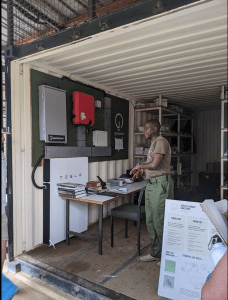
2.Powerwall 2
The Powerwall 2 was unveiled in October 2016. Compaed with others, The Powerwall 2 had a 13.5 kWh capacity and was capable of delivering 5 kW of power continuously and up to 7 kW of peak power in short bursts (up to 10 seconds). After 5 years, 100000 Tesla Powerwall 2 has been installed. Compared with Powerwall 1, Tesla Powerwall2 use the larger 21-70 cells, which have a 21mm diameter and are 70mm long. Tesla original Powerwall 1 used the smaller 18650 size cells.
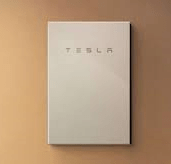
3.Powerwall+
On April 29, 2021, Tesla started filing for building permits for projects that would use the Powerwall+, a device that combines the functions of a Powerwall2, the Tesla Backup Gateway and the Tesla solar inverter. Up to 10 Powerwall 2 or Powerwall+ units may be combined to expand the capacity and maximum power of the system
.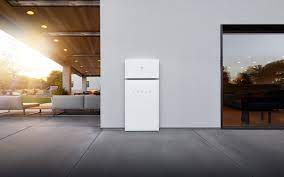
| Model | Introduced | Price (US$)[a] | Capacity (kWh) | Maximum Power | Weight | Dimensions, H × W × D | Operating temperature | Cycles (during 10 year warranty) | |
| Continuous | Peak (10 seconds) | ||||||||
| Powerwall 1 (discontinued) | April 2015 | $3,000 | 6.4[30] | 3.3 kW[31] | 214 lb (97 kg) | 51.3 in × 34 in × 7.2 in (130 cm × 86 cm × 18 cm) | −4 to 110 °F (−20 to 43 °C) | 5,000[32][33] | |
| Powerwall 2 | October 2016 | $5,500, later $6,500 | 13.5 (usable)[34] | 5 kW | 7 kW | 251.3 lb (114.0 kg)[35] | 45.3 in × 29.6 in × 5.75 in (115.1 cm × 75.2 cm × 14.6 cm) | −4 to 122 °F (−20 to 50 °C) | Unlimited (Used for solar self-consumption, time of use load shifting or backup power) 37.8 MWh of aggregate throughput (other applications)[36] |

household solar battery storage
- Compare Service History
Lead-acid batteries have been used as backup power for residential solar power installations since the 1970s. It is called a deep cycle battery; with the development of new energy sources, lithium batteries have developed rapidly in recent years and become a new choice.
- Comparison of cycle life
Lead-acid batteries have a shorter working life than lithium batteries. Some common lead-acid batteries have a cycle count of up to 300, and lithium batteries around 5,000. Therefore, during the entire service life of the solar power generation system, users need to replace the lead-acid battery.
- Compare safety performance
Lead-acid batteries have mature technology and excellent safety performance; lithium batteries are in the stage of rapid development, the technology is not mature enough, and the safety performance is not good enough. With the development of technology, the safety problem of lithium battery has been solved. Lithium battery has BMS management system, with overcharge, overdischarge, overcurrent, short circuit and other protections to ensure the safety of the battery pack, especially the main phosphoric acid Iron-lithium battery, high safety performance, no explosion and no fire.
- Compare price and convenience
Lead-acid batteries are about one-third the price of lithium batteries. The lower cost makes it more attractive to users; but the volume and weight of lithium batteries with the same capacity are about 30% less than that of lead-acid batteries, which is lighter and more space-saving. However, the limitations of lithium batteries are high cost and low safety performance. Although with the same voltage and capacity, lead-acid batteries are cheaper than lithium batteries. However, the cycle life of ordinary lead-acid batteries is only about 300 times and the service life is 1-2 years. The current lithium iron phosphate battery has a guaranteed minimum cycle life of more than 2,000 cycles, about 5,000 cycles practical performance and more than 10 years service life. Comprehensive comparison, the cost of lithium iron phosphate batteries is lower.
| LITHIUM-ION | LEAD ACID | |
| Cost | $5,000-$15,000 | $500-$1.000+ |
| Capacity | 15+kWh | 1.5-5kWh |
| Depth of discharge | 85% | 50% |
| Efficiency | 95% | 80-85% |
| Lifespan | 10-15 years | 3-12 years |
5.Compare charging time
Lithium batteries charge faster at higher voltages, typically within 1.5 hours, while lead-acid batteries take 4 to 5 charges to fully charge.
6.Compare Enviromental Protection
Lithium battery does not contain any harmful heavy metal elements, pollution-free both in production and actual use. As long as lead acid batteries are used, there will always be pollution rates several times as high as their gasoline counterparts. It is estimated that 44%–70% of the lead from lead acid batteries in the PRC is released into the environment as waste.
7.Compare Weight
LiFePO4 substitution battery is only approx. 1/3 of lead acid battery in weight;. It can Facilitate transportation, installation, storage.
8.Compare Use
Lithium battery are more easier to install and use. Our home energy battery just plug and play to minimize the installation time and cost. Compact and fashionable design fits in your sweet home environment. You can save lots of time and money.
Through the above analysis, I hope it will be helpful for you to choose the right battery. In my opinion, lithium battery are better than lead-acid battery in home energy storage. We also provide some home battery for you. If you have any question, contact us now. We will give you more reference comments. Manly has rich experience in household solar batteries. lear more about it now.
5kwh Home Battery 10kwh storage battery
